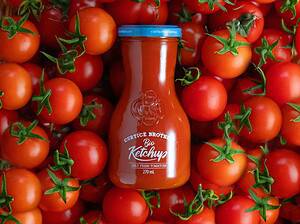Introduction
For importers in the food industry, understanding what affects tomato paste drum price is essential for smart purchasing, budgeting, and supplier negotiation. Whether you’re sourcing from China, Turkey, or Europe, multiple variables—ranging from agricultural yields to packaging materials—can significantly influence pricing. In this article, we break down the key cost drivers and provide actionable insights to help importers make informed procurement decisions.
1. Raw Tomato Cost: The Foundation of the Drum Price
At the heart of every tomato paste product is the fresh tomato itself. Fluctuations in fresh tomato prices directly affect the final drum price of tomato paste.
Key Drivers:
- Climate and weather (drought, floods, frost)
- Input costs (fertilizer, irrigation, labor)
- Regional differences in farming efficiency Example: China typically has lower raw tomato costs than Italy or Spain due to scale and labor costs.
On average, raw tomatoes make up 45–55% of the total production cost of drum-packed paste.
2. Brix Level: Higher Concentration, Higher Price
Brix refers to the concentration of soluble solids in tomato paste, primarily sugars and solids.
| Brix Level | Common Use | Price Trend |
|---|---|---|
| 28%–30% | General-purpose cooking, African markets | Lower |
| 30%–32% | Industrial processing | Higher |
| 36%-38% | Industrial processing | Highest |
Higher Brix = More tomatoes per kg of paste = Higher cost.
3. Packaging Type and Material Costs
The choice of packaging significantly affects tomato paste drum pricing.
Common Drum Types:
- 220L steel drum with aseptic liner (industry standard for export)
- Flexible aseptic bags in IBC or 1,000L containers
- Smaller drums or pails for specialty markets
Steel prices and food-grade liner costs fluctuate with:
- Global metal markets
- Resin/raw plastic availability
- Regional manufacturing costs
In 2025, steel packaging contributes ~12–15% to the FOB price.
4. Energy and Processing Costs
Tomato paste production involves washing, crushing, evaporation, sterilization, and aseptic packaging — all of which are energy-intensive.
Factors:
- Regional electricity and gas prices
- Automation level of production lines
- Local labor costs
For example, European factories tend to have higher labor and utility costs than those in China or Turkey.
5. Freight, Incoterms, and Logistics
Freight charges, Incoterms, and current logistics bottlenecks have a direct impact on CIF pricing.
Key Variables:
- Sea freight rates (e.g. Red Sea crisis, container shortages)
- Port handling and inland haulage
- Delivery terms: EXW, FOB, CIF — each shifts responsibility and cost
Tip: Always compare EXW and CIF prices to understand true cost breakdown.
6. Market Demand and Seasonality
Tomato paste pricing fluctuates with global demand cycles and seasonal harvests:
- High demand before Ramadan, Christmas, and summer bottling season
- Lower prices often seen during harvest season surplus (Aug–Oct)
- Regional demand spikes in Africa, South America, and Eastern Europe
Smart importers align contracts with off-peak periods for better pricing.
7. Supplier Scale and Reputation
Larger, more efficient processors offer more competitive prices due to:
- Economies of scale
- Stronger raw material sourcing networks
- Advanced quality control systems
Look for suppliers with:
- ISO, HACCP, BRC certifications
- Proven export experience
- Transparent documentation
8. Currency Fluctuations and Trade Policies
Currency depreciation in supplier countries (e.g., Turkish Lira, Chinese Yuan) can lower export prices. However, import tariffs, sanitary regulations, or anti-dumping policies may offset these benefits.
Stay updated on:
- Exchange rate trends
- Bilateral trade agreements
- Import duties in your destination country
9. Tips to Control and Reduce Tomato Paste Drum Costs
✅ Forecast orders in advance to avoid spot-market premiums
✅ Use flexible Incoterms based on your shipping control preference
✅ Consolidate shipments to reduce per-MT freight costs
✅ Audit total landed cost, not just unit FOB price
✅ Build long-term partnerships with reliable suppliers for better terms
Conclusion
The tomato paste drum price is shaped by a complex interplay of agricultural, industrial, and logistical factors. For importers, understanding these cost drivers is the key to securing competitive prices and ensuring supply chain reliability. Whether you’re importing 30–32 Brix paste for food processing or 28–30 Brix for distribution, knowledge is your greatest asset.
To request a detailed quotation based on your Brix, packaging, and destination requirements, contact us at info@taichysupply.com or visit www.taichytomato.com.

